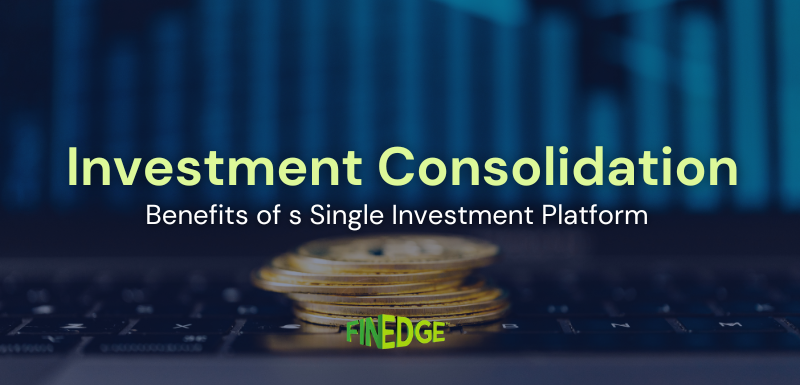Goal-Based Investing: The Right Way to Plan for Financial Success
- Understand how goal-based investing offers clarity, structure, and discipline.
- Learn why high returns alone don’t ensure financial success.
- Discover the 5-step process to align investments with life goals.
- See how platforms like FinEdge’s Dreams into Action (DiA) make goal-planning practical and trackable.
Most investors chase returns. But goal-based investing starts with your “why”, your life goals. It aligns your investment strategy with purpose, timelines, and discipline, making financial success far more achievable and less stressful.
Investing with Purpose: Why It Matters More Than Ever
Most investors today follow returns, trends, or peer pressure. But goal-based investing flips that script. It begins with a powerful question:
“What am I investing for?”
This question changes everything. Instead of reacting to market movements or chasing high-performing funds, you begin aligning your investments with your life goals; be it retirement, children’s education, or financial freedom. It transforms investing into a purpose-driven, emotionally resilient journey.
Why Good Returns Alone Don’t Guarantee Success
Here’s a hard truth: you can earn impressive returns and still fall short of your financial goals.
Why?
Because returns don’t equal outcomes, especially if your goals are undefined. Without a destination, even the fastest car will take you nowhere meaningful.
Real financial success is about achieving milestones that matter to you, such as:
-
Saving ₹25 lakhs for your child’s college education
-
Creating an emergency fund for peace of mind
-
Building a ₹3 crore retirement corpus over 25 years
-
Buying your dream home without financial strain
-
Planning for international travel or early retirement
The 5-Step Goal-Based Investing Process
1. Define Your Goals Clearly
Be specific. Don’t just say "save for education", say: “₹25 lakhs for my daughter’s UG education in 8 years.”
2. Prioritize What Matters Most
Not all goals carry equal weight. Use a framework that helps you prioritize essentials (like retirement) over discretionary ones (like vacations).
3. Quantify and Timeline Your Goals
Each goal needs a number and a deadline. This allows for accurate planning: how much to invest monthly, expected returns, and suitable instruments.
4. Select Products Based on Goal Suitability
Avoid reverse engineering. Choose investments that match your time horizon and risk. For example:
-
Short-term goal → debt funds or liquid instruments
-
Long-term goal → equity mutual funds via SIPs
5. Review and Realign as Life Changes
Your income, responsibilities, or priorities may change. Periodic reviews help you stay on course.
What Makes Goal-Based Investing So Effective?
Builds Investing Discipline
You're far less likely to withdraw a SIP if you know it funds your child's education.
Reduces Panic in Market Dips
You stay calm and focused because your purpose outweighs market volatility.
Prevents Product Overload and Confusion
No more chasing shiny new funds. You only pick what helps achieve your goal.
Provides Clear Tracking Metrics
You always know where you stand, how close or far you are from your target.
How FinEdge Brings Goal-Based Investing to Life
At FinEdge, our proprietary Dreams into Action (DiA) platform is built around one powerful belief:
Investing with purpose is the only way to create lasting wealth.
DiA empowers you to:
-
Have structured conversations with seasoned investment managers
-
Map and prioritize your goals based on life stage
-
Co-create your investment plan
-
Track your progress with real-time dashboards
-
Adjust dynamically through expert-driven interventions
“We don’t recommend products. We help you make decisions that get you closer to your dreams.”
FAQs
Your Investing Experts
Continue Reading
Lessons From the World’s Best Investors to Carry Into the New Year
As one year ends and another begins, many investors look back at returns, missed opportunities, or decisions they wish they had made differently. But the most useful lessons rarely come from year-end numbers. They come from principles that have worked across decades and market cycles. As you step into the new year, these ideas from some of the world’s most respected investors offer a far more reliable guide than any forecast.
Why Consolidating All Your Investments on One Platform Makes Sense
Many investors accumulate investments gradually, across employers, platforms, advisors, and products. Over time, what began as diversification can turn into fragmentation. Consolidating investments on one platform is not about reducing choice or control; it is about gaining clarity, aligning investments with goals, and improving decision-making across market cycles.
Why Successful Investing Follows a Clear Why–How–Where Framework
Investing decisions are often influenced by market trends, recent performance, or product recommendations. However, long-term investment success depends more on structure than selection. A clear Why–How–Where framework brings discipline to investing by ensuring that goals are defined first, planning comes next, and product choices follow. This approach helps investors build portfolios that are aligned with their objectives and sustainable over time.



